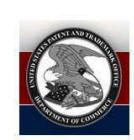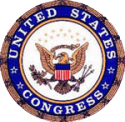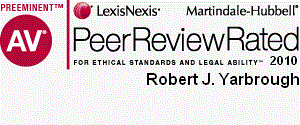Newsletter Issue 23 - January 2011
In this issue:
Patent Infringement 'R' Us
To Hold or Not to Hold - IP holding companies
PTO Green Technologies Program Extended
Patent Reform Redux
Patent Infringement "R" Us - A New Business
Model Condoned by the Federal Circuit
The past several years have seen a concerted
attack on the patent system, waged by a curious coalition of
interests from the information technology industry and foreign
governments and corporations. This attack, waged in
law journals, in
the Congress, and in the courts, has whittled away at the value of
patents, making it more difficult for patent owners to obtain
injunctions against infringers, making it easier for infringers to
start declaratory judgment law suits in their own home courts,
reducing the chances that a case will be found to be exceptional,
and thus to obtain treble damages, and making it easier to
invalidate patents. The latest move by the Court of Appeals for the
Federal Circuit has opened the door to infringement of method
patents by court-approved conspiracy.
In the recent case of
Akamai Technologies, Inc. v. Limelight
Networks, Inc., No. 19-1372, __ F.3d __ (Fed. Cir. Dec. 20, 2010),
the Court put the final nail in the coffin of so-called "divided
infringement", where two or more parties carry out different steps
of a claimed method, acting together to carry out the patented
invention. The Court determined that holding these parties liable
for infringement now requires the patent owner to prove that one of
the accused infringers directs or controls the other in an agency
relationship (that is, one party has the legal right to require the
other to carry out the patent steps, and to control when, how, and
where this is done.) In the Akamai case, customers of the accused
infringer, Limelight Networks, were told how to carry out Akamai's
patented method steps using Limelight's software. According to the
Federal Circuit, since customers were not obligated to carry out the
steps, there was no agency relationship between Limelight and its
customers, and thus, even though Akamai's patented method was used,
nobody could be held liable for infringement.
In effect, the Court has now condoned the selling of patent
infringement kits with instructions that say, "There is a method
patent that claims steps A, B and C. We've done step A for you. Buy
this kit, and if you want to achieve the patented method's results
(but remember, you're not required to,) do steps B and C..."
One may well imagine that we will now see a rash of "arm's length"
contracts between companies that recite the legal niceties of the
independent contractor relationship, and merely allow for the
voluntary cooperation between them in carrying out patent
infringement. "The Acme Company, having carried out step A of the
Smith Patent, agrees, that should the Zeta Company, in its
independent and sole discretion, decide to carry out the remaining
steps of that patent in any manner, at any place and at any time of
its choice, then Acme and Zeta shall share in revenues as
follows..."
Thus, by restricting joint infringement to the narrow confines of
agency, the Federal Circuit has created a business opportunity for
those wishing to infringe method patents. The newly pronounced
standard is a clear warning to inventors of processes such as
computer systems that claims must now be drawn narrowly, and often
in an artificial manner that seeks to prevent operation of the
claimed method across networks. This requirement is directly counter
to the clear trends in the information technology field that will
put more information and processing "in the cloud" and marks yet
another departure from the real world of high technology by the
courts.
Lawrence Husick
To Hold or Not to Hold
A popular method for protecting and managing intellectual
property ("IP") assets -- high valued assets, in particular -- is to
transfer them to a special company created for the purpose of
creating, protecting, licensing, and monitoring, IP. Typically, a
corporation may create a subsidiary to hold its IP, which it may
license back to the parent and, perhaps, to third-party licensees.
Assuming that the holding company's relationship with its parent is
arms' length and that it obeys all the appropriate corporate
formalities, isolating the intellectual property protects the
holding company from lawsuits against the parent, claims of the
parent's creditors, and the parent's insolvency. It might also
protect the IP from hostile takeovers of the parent company. Placing
IP in a separate holding company may also provide an objective
measure of its value, uncluttered by the operations of the parent.
This may be of particular importance for obtaining financing and
eventually selling the IP to a third party. From the income tax
perspective, the Parent may deduct the royalties it pays to license
the IP. Relieving itself of IP ownership may also reduce tax
consequences based upon the parent's net worth such as franchise
taxes. Of equal importance is that the holding company subsidiary
may not be liable for state income tax solely because it is a
holding company. At the same time, the holding company is available
to offer services to the parent as well as make loans and pay
dividends.
Sound too good to be true? You may be right. States generally have
an aversion to IP holding companies because they perform services
but do not generate taxable income. Some states aggressively audit
IP holding companies, hoping to "pierce the corporate veil" by
proving that the holding company is the alter ego of its parent.
Should the state require combined reporting for parent and sub as a
result of an audit, it would eliminate the tax benefits of the
arrangement altogether. North Carolina and some other states have
enacted anti-passive investment company laws designed to eliminate
the tax benefits of the intangible holding company. In recent years,
IP holding companies have been challenged in Connecticut, Maryland,
Massachusetts and New York. State legislative bodies in Connecticut,
New York, Alabama, Mississippi, New Jersey, North Carolina, and Ohio
have enacted so-called "Add Back" statutes. The
Model Add Back
statute provides that:
For purposes of computing its net income under this chapter, a taxpayer shall add back otherwise deductible intangible expense directly or indirectly paid, accrued or incurred in connection with one or more direct or indirect transactions with one or more related members.
The bottom line is that if you believe that creating an IP holding
company may be of benefit to your organization, you should be wary
of the tax consequences, and plan to operate the holding company in
accordance with state statutes to gain the expected benefits. Be
sure to contact your tax professional as well as your lawyer to
determine if having an IP holding company is right for your
situation. Let us know if Lipton, Weinberger & Husick can help.
Adam Garson
PTO "Green Technology" Program Extended
In December, 2009, the PTO implemented a
'green technology'
program to accelerate review of patent applications relating to
several green technologies, including:
• development of renewable energy resources,
• energy conservation,
• greenhouse gas emission reduction and
• environmental quality.
One of our clients with a green invention opted for accelerated
review under the program and received very quick action from the
PTO. The PTO issued a first office action on the client's patent
application, with claims allowed, within weeks of filing the 'green
technology' petition.
The program originally applied only to patent applications filed
before December 8, 2009. The program is
extended
and applications filed after December 8, 2009 now can qualify. If
your invention relates to a green technology, we strongly recommend
that you consider this program and not delay. Once 3000 petitions
are granted, the program terminates.
Robert Yarbrough
Patent Reform Redux
Every congress for the last six years has seen one or more bills introduced to address patent "reform." The new 112th Congress is no exception. Senators Leahy (D), Hatch (R), and Grassly (R) have introduced yet another patent reform bill. The bill takes up where the 111th Congress left off.
In the past, patent reform generally has been supported by companies
that are frequent defendants in patent infringement litigation,
mostly in the information technology industries, and
by those who believe that a patent gives the patent owner too much
power. Patent reform generally has been opposed by independent
inventors, patent owners and companies, such as pharmaceutical
companies, that depend on a strong patent system for their
existence. We can expect discussion and debate before action on the
bill. The drumbeat of propaganda has begun. Stay tuned.
Robert Yarbrough

